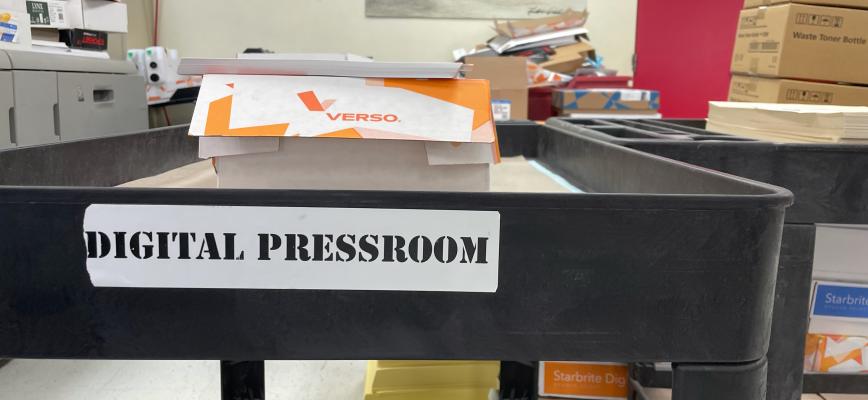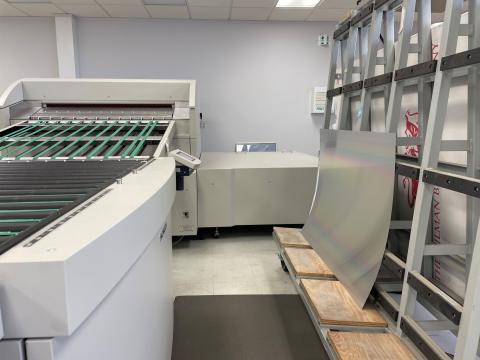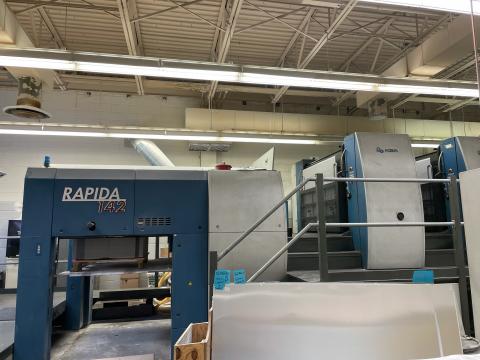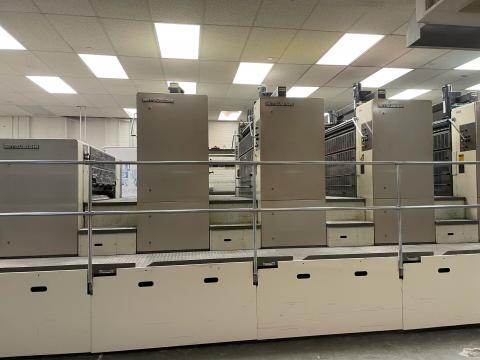
Offset vs Digital Printing
There are two styles of printing used at CPC: Offset and digital.
The difference between the two has to do with how the image is applied to the paper and how the ink is manipulated. At CPC, we make the choice between the two that will best fit for your project’s color control, quantity, deadline, and budget.
The process starts with making “plates” from aluminum. They are laser etched from a digital file and one plate is created per color using the CMYK system. The plates are attached to cylinder rollers that transfer ink to a rubber sheet called a “blanket.” The paper gets the ink itself from the rubber. The image on the plate attracts the ink/water – known as a “fountain solution” – and keeps the non-image area clean.

See our blog post on signatures to see how plates are formatted.
The name “offset” comes from the fact ink is not put straight onto the paper. It takes a significant amount of time to set up plates and ink. Once configured, offset printers are extremely efficient so they are excellent for large batches of prints.
Digital printing directly outputs from computer files and doesn’t require plates. The image is applied through the printer using electrical charges to form the image. The toner “sticks” to the charge. Electronic rollers called “drums,” one per color, are used to apply the ink. Then an electrostatic charge is used to attract and fuse through high heat to the paper. When lower quantities are required, digital is often the go-to. It works marvelously on items like flyers and business cards.
Other than the quantity, size is also a factor when we choose between presses for a job. Digital is often better for smaller pieces whereas most posters and books with larger covers use an offset press. We also have a wide format printer that allows for the production of banners and other huge requests. Color consistency varies slightly between the two as well. There is more precise control with offset that is needed for using Pantone colors.
The turnaround time is often faster with digital because it does not require the setup that offset printing does but is less cost-effective for projects that need a lot of copies.
If a project has something called “variable data” where something must change between each print, such as award certificates with different names on each one, digital is the way to go. A different plate for each one and all the colors on it would have to be created for that to succeed on an offset printer.
By having these different printers, CPC can offer an expansive number of services and can cater to each project’s individual needs.


Offset presses have individual blocks for each of the CMYK colors. Each one takes care of its specific ink color on the metal plate.
